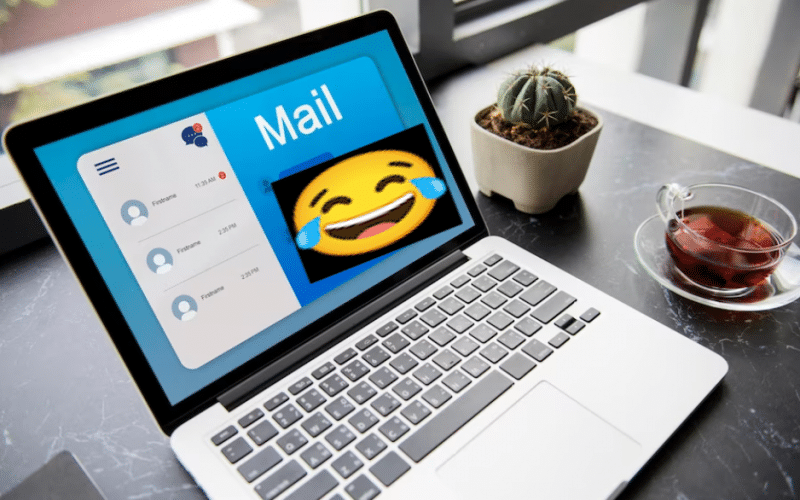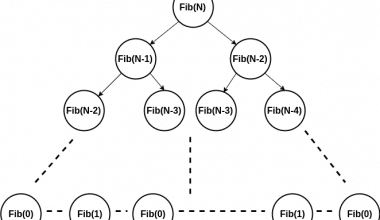Business people frequently use email to connect with potential clients, customers, or colleagues. Many people use the same professional sign-offs regularly because it’s such a prevalent form of communication. While these conventional email closings are effective, they typically fail to grab the recipient’s attention and make you stand out from the competition. In this article, we define funny email sign-offs and provide you with a list of imaginative possible sign-offs that you can use to differentiate yourself and your business email from the competition.
What Are Email Sign-Offs?
Email sign-offs are words or phrases used just before your name after an email, and they are also referred to as “valedictions.” Furthermore, they almost always come after a comma and your name and are used to respectfully indicate the end of your message. The following are the most typical business email sign-offs:
- Thanks,
- Sincerely,
- Best,
- Regards,
- Respectfully,
Additionally, while the majority of people use one of these typical valedictions to end professional emails, you can use distinctive and individual email endings to add some personality to your email message.
Why Your Email Sign-Off Matters
Whether you want the reader to take any action or not, how you sign off in your email signature matters. Boomerang, a provider of email productivity software, found that using a simple signoff at the end of your email not only improves the average response rate overall but also significantly increases the likelihood that someone will write back. Note that the study examined over 300,000 email threads.
Additionally, emails that ended with a variation of “thank you” received a lot more feedback than emails that used other common closings. Whatever you decide, keep in mind that the email sign-off is the reader’s last interaction with you. It’s the last thing they read, and it determines whether or not they will respond at all, as well as how quickly. Imagine it as the conclusion of a conversation.
Would you ever meet a new business contact and then turn around and leave without saying anything? No. So why do you email rudeness?
What’s a Funny Email Sign-Off?
A funny email sign-off is a formal sign-off style that leaves a lasting impression on the recipient and reflects your personality and sense of style. Here are some suggestions:
- “Catch you on the flip side”: is a casual and amusing sign-off that is ideal for a cordial email exchange with a friend or coworker.
- “Until next time”: This final salutation is brief but meaningful. It suggests that you are interested in carrying on the conversation at a later time.
- “Stay awesome.”: This conclusion is upbeat and constructive. It conveys your value for the recipient and your desire for them to be happy.
- “Cheers to a great day!”: This conclusion is joyful and upbeat. It’s a fantastic way to end an effective email conversation.
- “Best regards”: This closing phrase is formal and timeless. It demonstrates consideration for the recipient and is appropriate for formal business emails.
Finally, remember that being true to yourself is the secret to a cool email sign-off. Pick a signoff that fits your style and feels natural.
Examples Of Funny Email Sign-Offs
In some circumstances, a formal and conventional email signature is required. Others, however, would benefit from a farewell that has a little more character and humor. The next time you want to leave a lasting impression on your recipient, think about using one of these original email sign-offs:
#1. Pop culture sign-offs:
These email salutations are great to use in correspondence with clients, coworkers, or business partners with whom you know you have common interests or who are roughly your age and will get the reference. These choices will aid in retaining your name in their minds:
- Live long and prosper.
- May the Force be with you.
- So long, and thanks for all the fish.
- To infinity and beyond!
- Hakuna Matata!
- Yabba Dabba Do!
- That’s all, folks!
#2. Compliments sign-offs:
People often feel better about themselves and their work after receiving compliments. Therefore, an excellent way to establish rapport and a good working relationship with a client or business partner is by using a complimentary email sign-off. After a project or following a fruitful conversation, these options are ideal for closing out emails:
- Great working with you.
- You always brighten my day.
- Keep up the good work!
- You’re a rock star!
- It’s always fantastic to work with you!
- No matter what you decide, keep up your great work!
- You always do well
- To your continued success.
- You’re an inspiration!
- Congratulations!
- Stay amazing.
#3. Anticipation sign-off:
Anticipation contributes to your enjoyment of an activity or event. Referencing an upcoming activity can put the recipient of your email in a positive, anticipatory mood. Using an anticipatory email sign-off is an especially useful strategy to use before a trade show, workshop, or other industry event both you and the person you’re emailing will attend:
- Have a great [holiday or vacation].
- Looking forward to seeing you at [event].
- Can’t wait for [event]!
- To a fantastic [event].
- Have a wonderful trip!
- Have a fun weekend!
- 3, 2, 1, blast off!
- Have a splendid [date, activity, or event]!
- Stay tuned.
- I’ll circle back shortly.
- Until next time.
- *Safe and happy travels.
- The countdown to [event] begins!
#4. Gratitude sign-off:
Gratitude, especially if it is expressed in a specific way, can foster a good relationship. Therefore, use closings like these following conferences, during projects, or following assistance from the email recipient:
- Thank you for [a specific reason].
- I’ve had fun.
- Thank you for your time.
- If I can ever help you as much as you’ve helped me, just say the word.
- Thank you for the support!
- Thank you for your consideration.
- It was great working with you—until next time!
- Thanks for always [action they do that supports you].
- Thanks for thinking of me.
- Many thanks!
- I appreciate your help.
#5. Motivation sign-off:
Motivational email sign-offs convey your concern for the recipient’s success. Therefore, you should look up any important upcoming events you are aware of in your valediction to the recipient of the email. They’ll value your support and the fact that you remembered a specific aspect of their life:
- I wish you the best at [event].
- Keep your head up!
- Looking forward to hearing about your continued success.
- Hold on to hope.
- Sending happy thoughts in your direction.
- Sending positive vibes your way!
- Hope this helps.
- Keep fighting the good fight!
- Keep your chin held high!
- Feel better soon.
#6. Action sign-off:
“Calls to action” is the special name for action-based benedictions. These sign-offs are especially helpful for prospective customers and clients who might be curious to learn more about your business, product, or service but are unsure of how to proceed:
- Tag, you’re it!
- I can’t wait to hear from you!
- What are your thoughts?
- Let me know what you need to get started.
- You can reach me anytime.
- Let me know what you think.
- Does this look interesting?
- Don’t forget to [action]!
- Let’s catch up soon!
#7. Humorous sign-off:
Any email can benefit from some humor at the end. Note that these work best when shared with long-term clients or coworkers who are aware of your humor but whom you want to connect with more deeply. Consider using humorous farewells like these:
- G2G, bye!
- Peace out.
- See you later, alligator!
- Stay frosty!
- Are you still reading this?
- Thank goodness it’s Friday!
- Hasta la vista!
- Catch you on the flip side.
- Outie 5000.
- Rock ‘n’ roll!
- And that’s a wrap!
#8. Emojis or pictures sign off:
An image is the most captivating thing there is. Therefore, as a closing thought, think about using an emoji, a string of emojis, a photo, or a GIF. Similar to the humorous sign-offs, these are most effective when used with email recipients who are already familiar with you. Nevertheless, because of their distinctiveness, these valedictions can strengthen and develop relationships:
- A peace sign emoji
- A sun emoji with a sunglasses emoji
- A GIF of a person waving goodbye
- A photo of a beautiful sunrise
#9. Professional sign-off:
If you must keep it strictly professional but still want your email recipient to remember your message over those of your rivals, think about using one of these elegant but less usual signatures.
- Cheers!
- Kind regards.
- Warmest regards.
- Namaste!
- *Carpe diem.
How Do You End a Fun Email?
Here are a few examples of fun email sign-offs you should think about using if you’re looking for more ways to end your emails.
- Live, laugh, and love!
- That’s all, folks!
- Live long and prosper!
- Thank goodness it’s Friday!
- Are you still reading this?
- Stay frosty! (As an alternative to “Stay cool”)
- Congrats on reading this whole email!
- Have a great time procrastinating!
- To infinity and beyond!
- TGIF!
- One step closer to Friday!
- At a loss for words.
How Does Gen Z Sign Off Emails?
Gen Z’ers are replacing traditional email sign-offs with more casual and carefree ones, such as “Yours unfaithfully,” “Bless up” or “Cold regards.” People have been sharing their Gen Z coworkers’ email sign-offs via TikTok and Twitter, which are often funny and snarky. Here are a few amusing email closings currently being used by Generation Z:
- Bless up!
- Cold regards,
- Mean regards,
- Slay, serve, survive!
- Another day another slay!
- YEET
- Pop off
- Send it
- Swag4lyf
Funny Email Sign-Offs on TIKTOK
- Keep it groovy.
- Stay litty
- Humble yourself
- Stay real
- Stay slaying!
- Please hesitate to reach out.
- Live, laugh, and leave me alone.
- Hasta La Pasta!
- Live, laugh, and leave me here.
Funny Email Sign-Offs Reddit
On Reddit, we found funny email sign-offs like:
- “Insert pleasantries here”
- Please hesitate to reach out!
- Yours unfaithfully
- If you have any questions, please ask someone else.
- Thanks (not sure what for).
- Hakuna Matata!
- wishing you good vibes
- Appropriate Regards
- Hope everyone is keeping positive and covid negative!
- stay safe
- have a sparkled day
- Best
- Kreggs
What Is the Best Email Sign-Off to Use?
These are email sign-offs that are reliable.
- Regards.
- Sincerely,
- Best wishes.
- Cheers.
- Best.
- Thanks in advance.
- Thank you.
How Do I Sign Off Passive Aggressive Email?
If you wish to sign off an email in a passive-aggressive style, use the format below:
- “As per my last email…”
- “Should you need further clarification, please don’t hesitate to contact me.”
- “Sorry to bother you again.”
- “Regards,”
- “Kind regards,”
- “Warm regards,”
- “I’m just cc’ing my colleague.”
- “I’ve cc’d my boss.”
What Is the Most Passive Aggressive Email Ending?
Respectfully: This is a typical way to end a business email, especially if the recipient is in charge, is very formal, and even a little stiff.
What Are the Best and Worst Email Sign Offs?
#1. Best email sign-offs:
Best wishes:
This sign-off is reliable because it strikes a good balance between friendliness and formality. However, be mindful of its greeting-card feel and use it only when it complements the tone of your email.
#2. Worst email sign-offs:
Yours truly
Are you really, truly the recipient’s property? Nope. Unless you’re writing a letter from summer camp to your parents, this comes across as fake and corny.
Should I Use Sincerely or Best Regards for Email Sign off?
For official emails and letters, like job applications and business correspondence, use the salutation “Yours sincerely.” These are not common occurrences in regular email correspondence. Therefore, the phrase “Best regards” is a better choice for emails at work.
Relative Articles:
COVER LETTER EMAIL: Sample, Formats, and How to Write
OUT-OF-OFFICE EMAIL: Best Ways to Write an Out-Of-Office Message and Examples
How to Recall an Email in Outlook (Detailed Guide)






